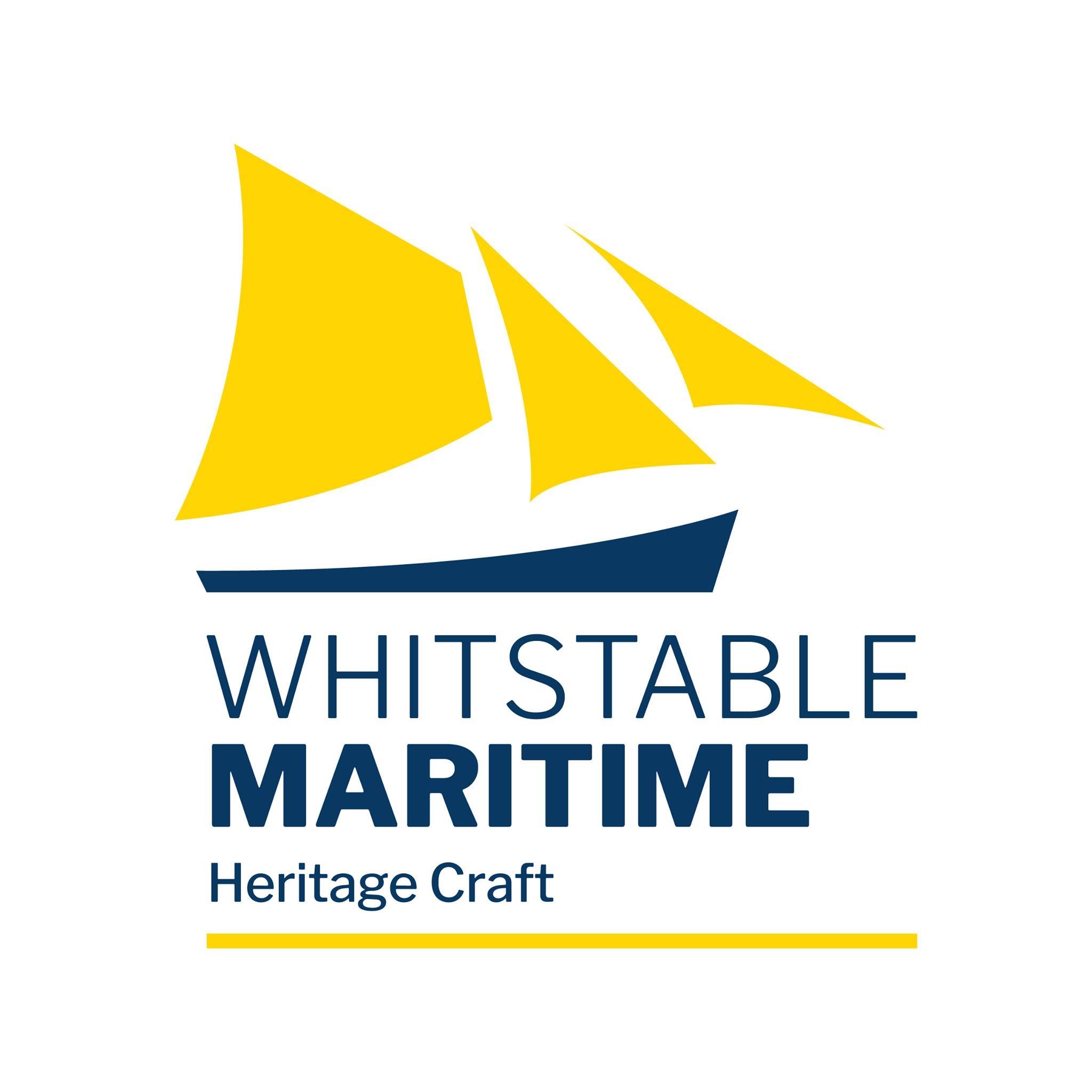
About Whitstable Maritime
Whitstable Maritime’s mission is to maintain and strengthen the town’s economy by building on its maritime traditions and crafts. Through the restoration of historic vessels, notably Gamecock, providing active learning opportunities for all, on and off shore, and by the application of new technologies in development of the Whitstable section of the English coastal path, it will enable residents, visitors, schoolchildren and students to explore the town’s connection with the sea, past, present and future.
Everyone involved in the charity is a volunteer. They currently bring experience in boat-building, seamanship, architecture, marine ecology, education, IT, retailing and business.
About Gamecock
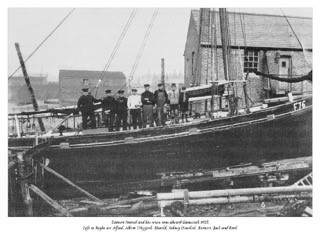
The Gamecock is a 43 foot oyster yawl built in 1906/7 by the Collar brothers at their yard on Whitstable beach. The proud owner was Albert Stroud, father of seven children by two marriages. The family earned their living dredging for native oysters and the Gamecock joined approximately 70 similar vessels working in the Swale.
From the 1960s onwards, Gamecock was owned and looked after by Bill Coleman. Like many of the fishermen, Bill saved money by repairing his own boat and storing his sails in the hold. So when the Gamecock was accidentally staved in by another craft, he repaired the hull by adding a second skin. This has now been removed by a team of volunteers and the rotten planks replaced under the guidance of a shipwright. When the 40 foot mast was being lifted out prior to pulling the Gamecock up the slipway to carry out the repairs, it snapped at deck level where surface water had penetrated.
Keeping large, heavy sails beneath deck may have saved money on storage but it also restricted the flow of air. The sails became damp with surface water finding its way down and consequently the underside of the deck has rot. Bill also attempted to improve the performance of his craft by modifying the stern which has left it weakened, so this also needs to be reconstructed when she is next out of the water. At the same time, the propeller shaft and engine will be replaced with a smaller rotary engine to create room for bunks and improve safety.
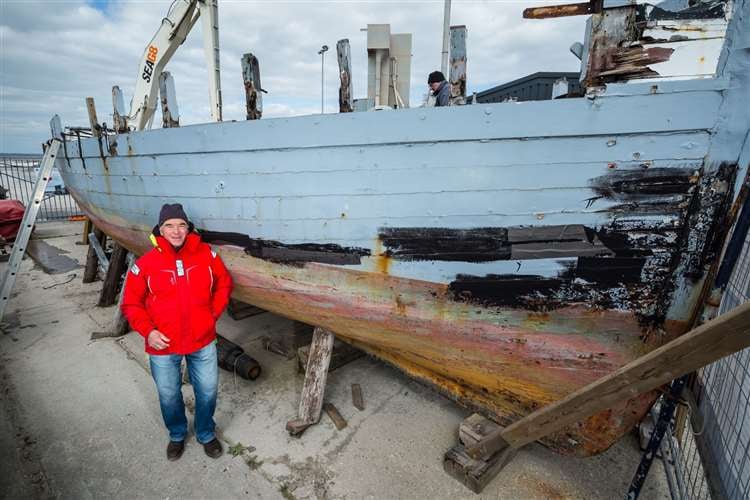
In 2014 an ad hoc group of about twenty individuals, including Bill, gathered to consider the lack of focus on Whitstable’s connections with the sea - past, present and future. The outcome was a decision to purchase the Gamecock from Bill and establish a charity. A marine survey confirmed that the Gamecock could be restored to full working order.
For the first eighteen months the newly-formed Board had a ‘patch-and-mend’ approach to the boat which, indeed, is how it had been maintained since the 1960’s. However, a series of near-accidents while sailing and a growth in activities led the Board to exercise collective leadership.
Today the Board has a clear reconstruction policy for the boat (as defined by NHS-UK), and Board members lead four semi-autonomous Task groups, each with a clear function: restoring local historical vessels, establishing an annual maritime festival, planning a maritime discovery centre, and designing an interactive coastal trail. Strategy, finance, and marketing remain central functions.
The future for Gamecock
The Gamecock is more than a flagship; it is both a link with Whitstable’s past and a sea-going platform for activities such as sail training, teamwork and environmentally sustainable oyster dredging. She will be a key feature of the coastal trail along with pre-World War One film, an off-shore mooring, and a nineteenth-century warehouse that was formerly the headquarters of the oystermen. She will also participate in ‘Old Gaffer’ races during the maritime festival which now attracts a range of historical craft and 10,000 visitors. While the shipwright’s tools, plans and skills will be prominent exhibits in the maritime centre, as will photographic and documentary evidence of the former boat yards.
The Whitstable Coastal Trail
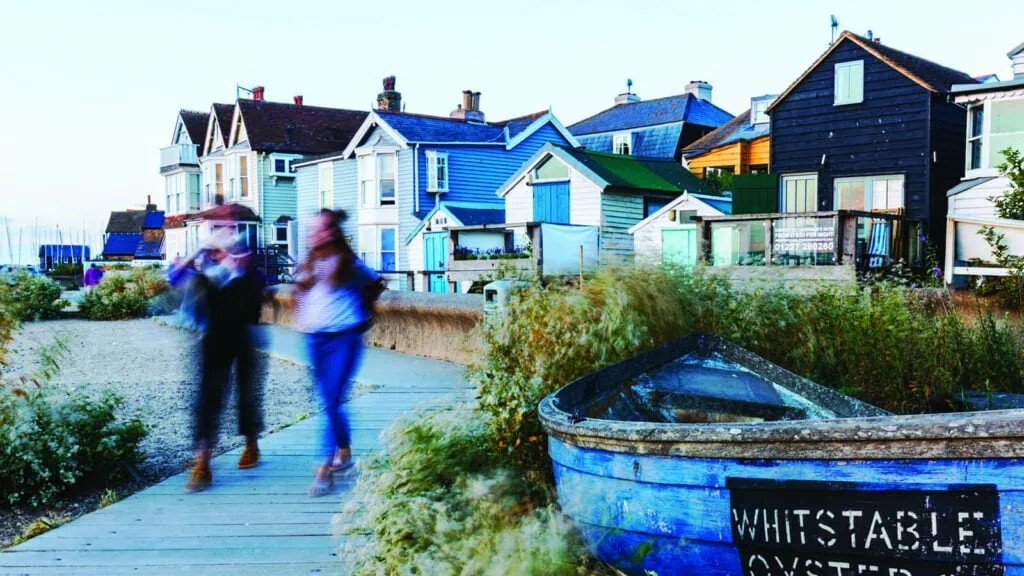
The Whitstable Coastal Trail is a unique 5km trail exploring Whitstable's heritage and coastline. It highlights key features along the coast, and was put together with knowledge from local enthusiasts and experts in geology, flora and fauna, history and archaeology. There is something for everyone, whether you are interested in the coastal environment and how it has changed over time, the wildlife, or the way the coast has been used economically both recently and in the past. The map highlights the nearest public car parks, accessible toilet facilities, and areas where access may be restricted, and can be downloaded from the Whitstable Maritime website at this link.
LATEST NEWS
December 2024 Whitstable Harbour & Boat Show returns in 2025! Full story
Programme for Whitstable Harbour & Boat Show Saturday 9 August 2025:
Drop-in family workshops on local marine art & craft / Readings of sea stories and poems for the young / A miniature steam railway to ride along the Quay / A 1,500 ton coastal vessel to explore / A Tipper Truck simulator to drive / Traditional craft skills at a regional Heritage Boat-Building Centre / Lifeboats and a border force rib to explore / A major yachting regatta offshore / A sailing race for East Coast barges and gaffers / A 42-foot 1907 Oyster Yawl undergoing restoration / An Oyster Education Programme / A police water search & rescue team / An IFCA cutter / DIY coracles / An historic railway & boatyards / On-line Satellite tracking of rising sea-levels and coastal erosion / A lobster hatchery / Protection for wintering birds / A fishing fleet / A radio-controlled model boat pond / Marching bands / A brass band concert / Canoeing demonstrations / Wild Sea Swimming / Street-food and gift stalls / Evening dinner with entertainment
A great day for all the family. Click here to find out more.
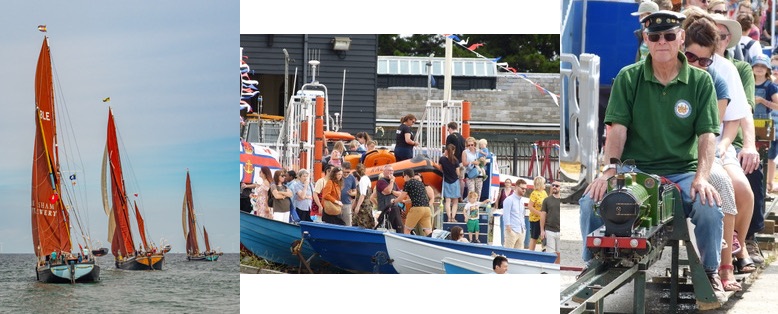
Find out more:
Follow them on social media:

